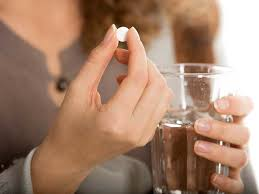Pharma Facts
Greetings of the day...!
Today i want to share some knowledge on basic terminologies in pharma and definitions of terms used.These things might be useful for your interview technical rounds.
When we talk about pharma usually the terms validation,qualification,calibrations,regulatory affairs etc., are strikes in our mind!
Are these things necessary?
Yes,Of course. Pharma industries are dealing with drugs which are directly consumed by the patient.
Adulterated,contaminated drugs may cause severe effect or death to the patient .It is must to ensure all the drugs production to be done with inbuilt quality,safety,efficacy.
To perform a manufacturing process of drugs we need personnel,equipment,system/software,and process.
Let's see how the validation and qualification involves in above aspects.
Validation: is the procedure gives documentary evidence that proves,the process/method will consistently produce the product which leads to the expected result.
There are different types of validations like Analytical validation,Cleaning Validation,Process Validation and Equipment Validation.
Here We discuss about process and cleaning types of validation in detail.
Process validation: The documented evidence that the process, operated within established parameters, can perform effectively and reproducible to produce a medicinal product meeting its predetermined specifications and quality attributes.
When we talk about Process validation of batches in pharma mainly we go through following types:
1 Prospective validation:(Pre market Validation) It is conducted prior to the distribution of batch intended for sale. when there is a new product,new facility, process change(Raw material/Solvents) or change in batch size. Simply we can say prospective validation occurs before the system is used in production.
2.Concurrent Validation:Validation carried out in exceptional circumstances, justified on the basis of significant patient benefit, where the validation protocol is executed concurrently with commercialization of the validation batches.
3.Retrospective Validation: Typically involves historical data of previous batches usually it occurs after production use has occurred.
4.Re validation: (Periodic/After Change)It means repeating the original validation and this type includes investigations on existing performance data. Approach is necessary to maintain the the validated status of the plant,equipment,process,systems.
Stages in process validation:1.Process design
2.Process validation/Process Qualification
3.Continued Process Verification
Process design:It involves the physical and chemical transformation of materials under controlled conditions.
Process Qualification: Where batches are performed used to demonstrate and document the consistency and reproducibility of manufacturing process at the facility.
Continuous process verification(CPV):It is the collection and analysis of end-to-end production process and data to ensure the product quality i.e must be in predetermined and qualified limits.
Cleaning Validation: iCleaning validation is documented evidence that an approved cleaning procedure will reproducibly remove the previous product or cleaning agents used in the equipment below the scientifically set maximum allowable carryover level.
This depends on MACO calculations.
Maximum Allowable carryover(MACO):It is calculated quantity of residue from a previous product when carried into a different product that can represent potential harm to the product.
Typically cleaning validation is depends on the results of swabbing and rinsing cleaning methods and techniques used for sampling of cleaned surface can be called as direct surface sampling method(Swabbing) and indirect surface sampling method (Rinsing).
Rinse Sampling:Taking a sample of an equilibrated post final rinse that has been recirculated overall surfaces.Rinse samples should be correlated to a direct measuring technique such as swabbing.
Rinse volume is calculated by surface area calculation and above MACO calculations ,swab and rinse quantities used for cleaning,Sampling techniques are depends on equipment measurements and capacities as well as equipment studies.
When equipment Cleaning results complies generally we go for Line Clearance.
Line Clearance: is a standardized procedure in MFG for ensuring equipment & work areas are free of products,documents and materials from previous process.
Qualification: Is an action of providing that equipment or ancillary systems are properly installed,work correctly and actually lead to the expected values.
Change control:It is a cGMP concept that focuses on managing change to prevent unintended consequences.This system provides checks & balances in the quality system by tracking,reviewing and approving the changes.CC is the first step to bring any type of change in industry through approval.
SAT:Site acceptance test is useful to determine the functionality of the system at the user site before its installation and which written by the client.
FAT: Factory acceptance test is executed at the vendors test facility to inspect the static or dynamic parts of system to support the qualification and documentation at the facility.
Design Qualification: The documented verification that the proposed design of the facilities, systems and equipment is suitable for the intended purpose.
Operational qualification: The documented verification that the facilities, systems and equipment, as installed or modified, perform as intended throughout the anticipated operating ranges.
Installation Qualification:The documented verification that the facilities, systems and equipment, as installed or modified, comply with the approved design and the manufacturer's recommendations.
Performance Qualification: The documented verification that systems and equipment can perform effectively and reproducibly based on the approved process method and product specification.
Calibration: is a process that demonstrates a particular instrument/device part produces results within specified limits.
Ex:Transmitters and gauges










.jpg)
Comments
Post a Comment